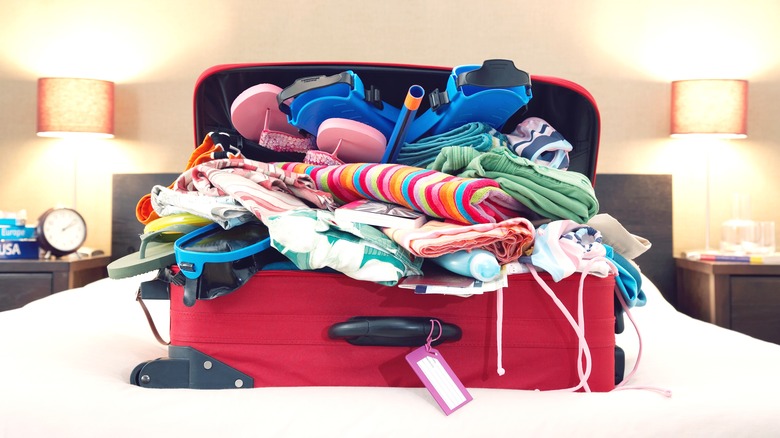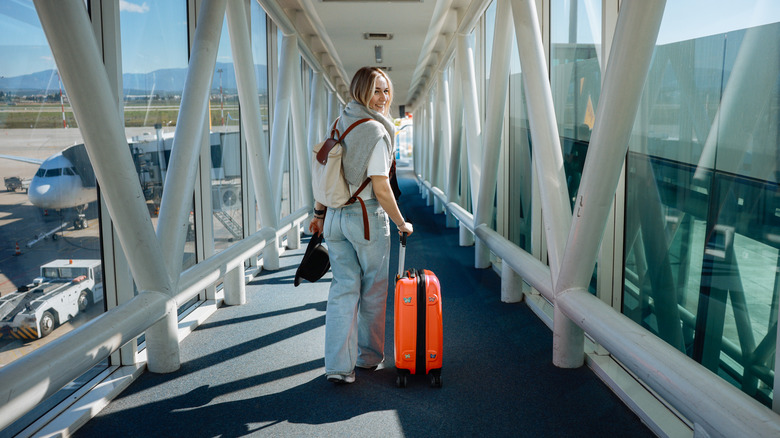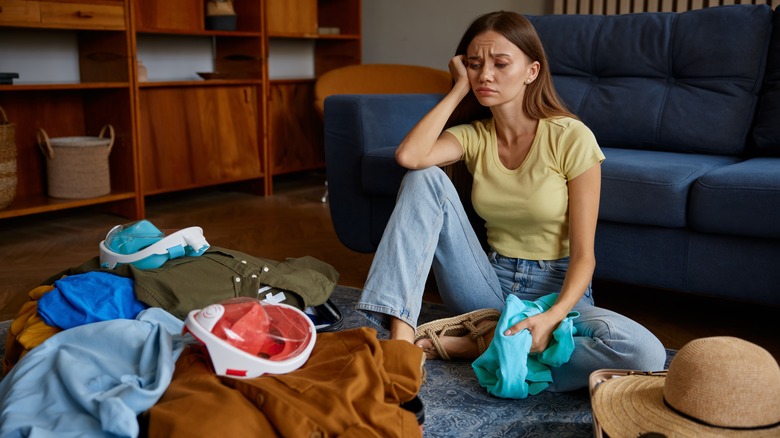Rick Steves' Clever Strategy To Avoid Packing Way Too Many Clothes
We have all traveled with that one friend or family member that always ends up packing way too many clothes, shoes, and accessories for a trip. The dreaded thought of "what if" floods their mind as they attempt to explain exactly why they need five pairs of shoes, snorkel gear, and an extra jacket "just in case the weather changes." As you arrive at the airport and go to check in, you breeze through the process nice and easy, while your travel buddy now faces an overweight baggage fee. They fumble to open their overstuffed luggage and stressfully ask you if you can spare some real estate in your bag to accommodate some of the extras they brought along for the journey. Packing too heavy is one of the most common packing mistakes people make while going on vacation.
Luckily, packing doesn't have to be this way. There are many tips and tricks to pack more efficiently — some are even quite simple. Travel expert and TV personality Rick Steves has an easy tip to avoid packing way too many clothes for your next trip. As explained in his blog, Rick Steves recommends that you simply travel with only one bag. That's it! Say goodbye to the travel days of packing an additional 15 pairs of underwear and five pairs of shoes. By following Steves' useful advice of traveling with only one bag, you'll be able to sail through the airport and cobblestone streets of Europe without breaking a sweat lugging an overstuffed bag.
Limit yourself to just one bag for travel
Lost, damaged, and delayed baggage, although rare, does happen from time to time. The last thing anyone wants when they get to their destination is their luggage arriving damaged, or even worse, not meeting them at the baggage carousel at all. This is where Rick Steves' idea of packing smart and packing light comes in handy.
Steves states that his company has taken tens of thousands of travelers on his tours with the golden rule of "one bag – that's it!" He mentions that this consists of only one carry-on bag, plus a small day pack. He personally packs no more than 20 pounds in a carry-on bag measuring 9" × 21" × 14" in size. This size easily fits in the overhead compartment on most transatlantic flights (though be aware that some intra-European airlines have stricter size limits due to smaller cabin space). While this may seem daunting to those that tend to overpack and may be slightly stress inducing, once you get the hang of packing only for the best case scenario and experience the ease and freedom of traveling light, you'll never want to go back to dragging heavy, oversized baggage with you on your travels.
Traveling with one bag as a carry-on also prevents the chance of losing your luggage during that dreaded 12-hour connection. This smart clothing game plan is essential for tourists while packing for a trip. The beauty of having your bag with you at all times is the sense of peace knowing that even if your flight changes at the last minute or gets delayed, you have all your belongings close by and ready to move with you.
Pack smart essentials only, not for the 'what if' moments
Most travelers, especially those traveling abroad, tend to pack as if they are preparing for a series of unfortunate events, rather than a vacation. The "what if" mindset kicks into high gear: What if my hotel doesn't have a hairdryer? What if I run out of toothpaste? What if I didn't end up bringing enough socks and my feet get sweaty from walking 20,000 steps a day while sightseeing? All of these "what ifs" will make you anxious that you'll forget something and sure enough, your luggage weight (and your arms) will pay the price later while carrying it on your travels.
While nobody wants to be caught off guard and unprepared on their travels, following this easy packing tip will make your travel day less stressful. Packing for the best case scenario, rather than the worst case scenario, is another top packing strategy that Rick Steves is adamant about. "Whether I'm traveling for three weeks or three months, I pack exactly the same," he wrote on his blog.
European department stores are filled with the same, if not more, brand name products that you know and love. Most hotels have hair dryers for their guests to use, and with the beauty of the internet, all it takes is a quick message to your hotel to double check if they have one for guests. Ran out of hair conditioner or toothpaste? No problem. Hit up the local department store or large chain grocery store, and you're bound to find everything you need in the aisles. Half of the adventure while traveling is rolling with the unexpected. And who knows, you might even discover your new favorite brand of German toothpaste along the way.


